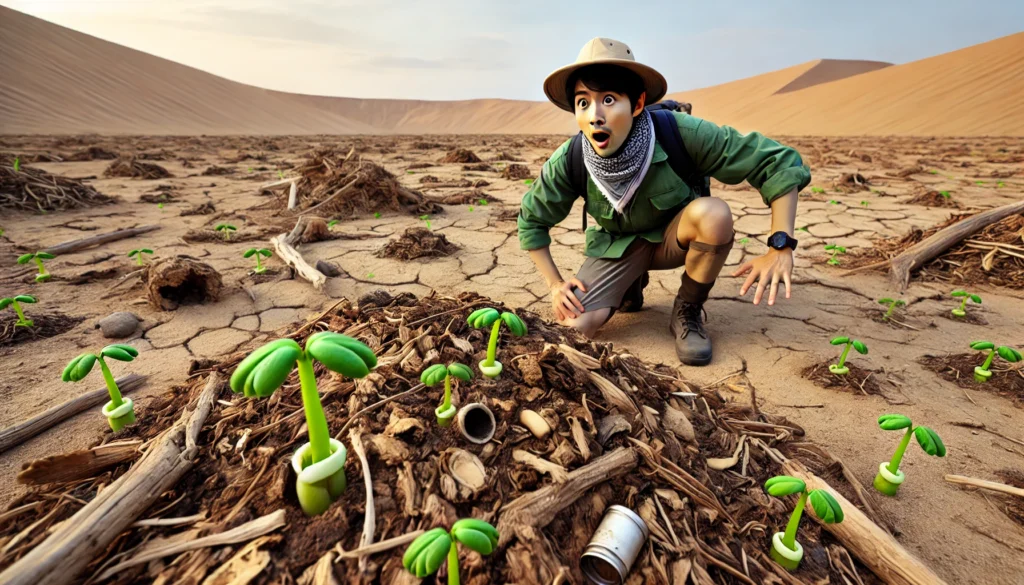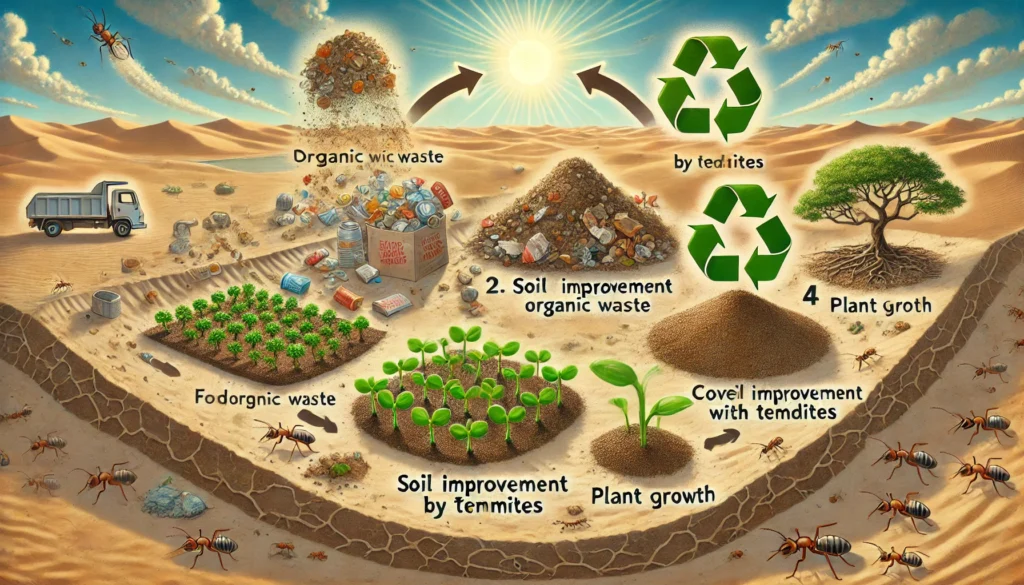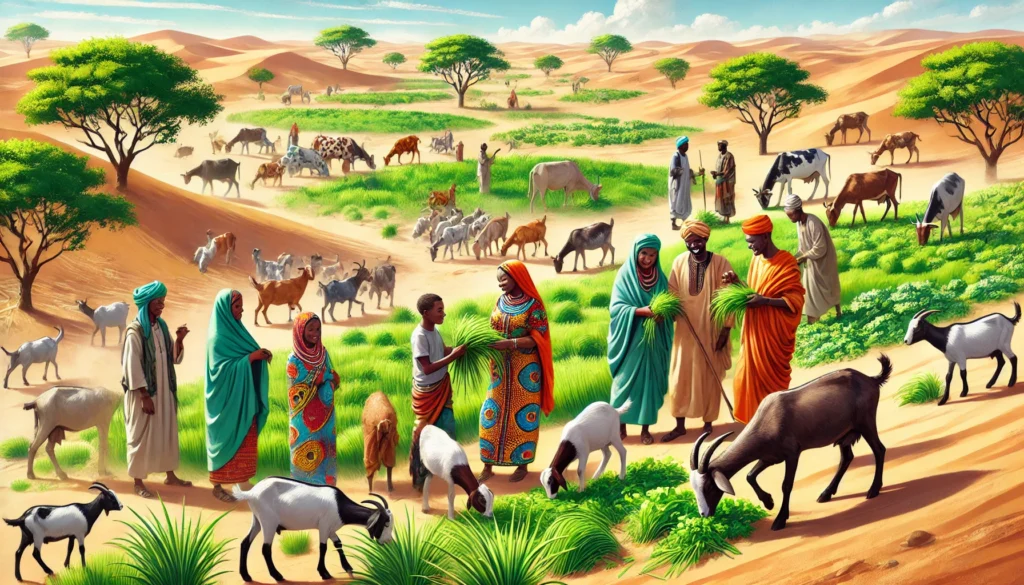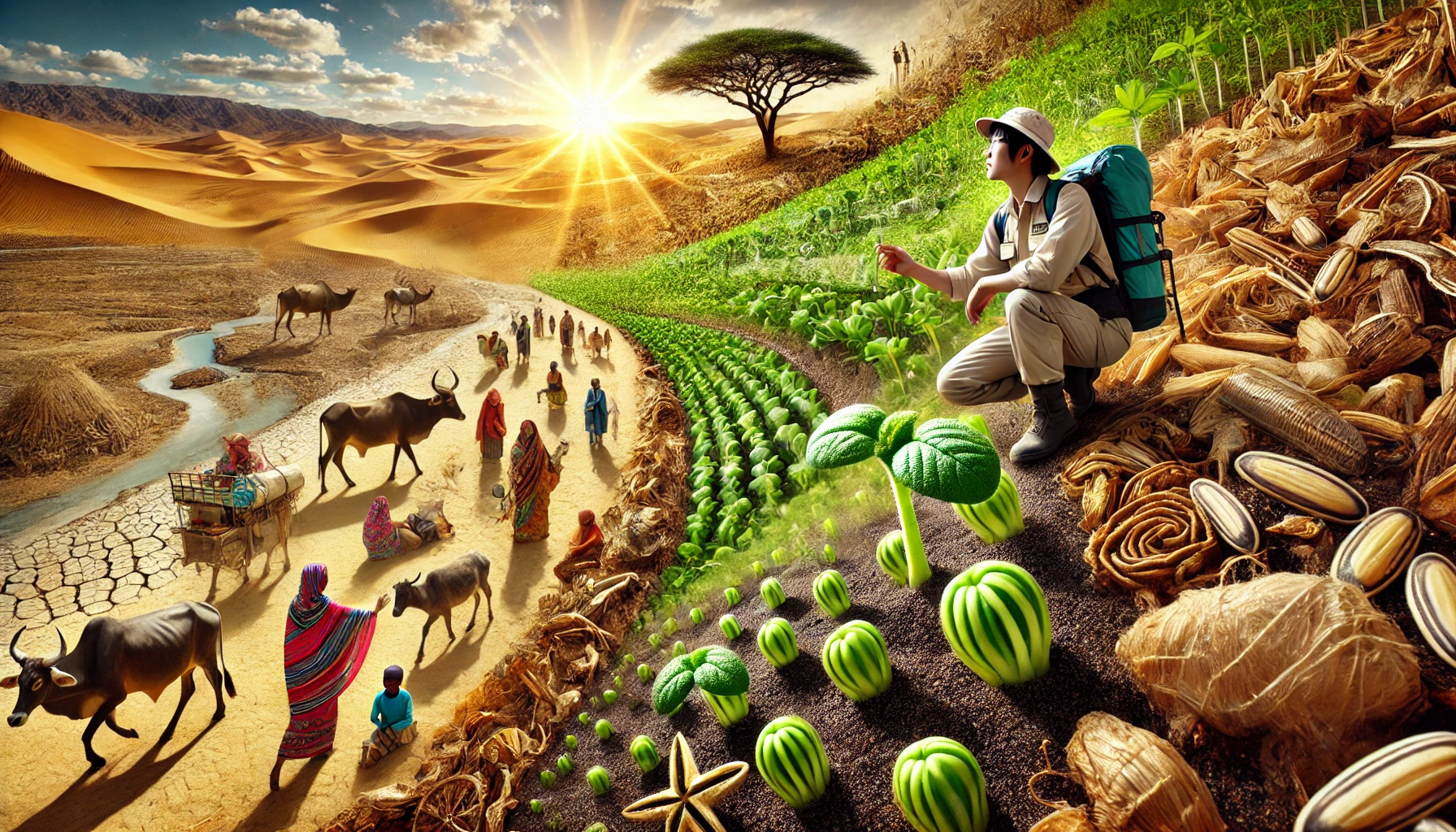1. Dumping Trash in the Desert? Environmental Destruction or Environmental Protection?
If someone told you that a Japanese person was dumping massive amounts of trash in the desert, what would you think?
Would you be outraged, thinking, “That’s environmental destruction!” or “How irresponsible!”
However, this “trash dumping” is not what it seems. In fact, it’s part of a revolutionary project that is turning deserts into green landscapes using waste!
The mastermind behind this project is Professor Shuichi Oyama from Kyoto University. In Niger, West Africa, he has successfully developed a method to green the desert by burying trash—something no one had ever attempted before.
This project is based on an incredible reversal of thinking:
Instead of “dumping trash = pollution,” it’s about “utilizing trash = environmental restoration.”
This surprising approach is changing the landscape of the desert.
2. A Chance Discovery? Plants Growing from Trash

This groundbreaking project actually started from a lucky coincidence.
While visiting a rural village in Niger, Professor Oyama noticed something strange.
In an area where locals had thrown away trash, plants were growing—even though the surrounding desert was completely barren.
He quickly realized:
“Maybe the organic matter in the trash is providing nutrients for plants!”
This led him to conduct research and eventually develop a method to green the desert using household waste. Working with local communities, he turned this idea into a full-scale project.
3. How Trash Turns a Desert Green

You might be wondering, “Isn’t just dumping trash bad for the environment?”
Actually, this project follows a scientific process that makes it work.
① Trash Becomes Soil Nutrients
Household waste from cities contains a lot of organic material, such as food scraps and paper. As this decomposes, it releases nutrients into the soil, which plants can absorb.
② Termites Help Till the Soil
Termites are attracted to the organic material in the waste and start digging tunnels underground.
This loosens the hard desert soil, allowing air and water to circulate, making it easier for plants to grow.
③ Covering the Trash with Sand
To prevent trash from blowing away in the wind or creating bad odors, it is covered with sand.
This ensures that the organic matter stays in place and decomposes properly.
④ Natural Seed Germination
Once the soil becomes fertile, seeds carried by the wind or mixed in the trash can start to sprout.
At first, only small plants appear, but over time, they grow into bigger trees, transforming the desert into a green landscape.
4. How This Project Changed Lives in Niger

This project didn’t just create greenery—it dramatically improved the lives of local people.
• More land for livestock grazing
→ Grass started growing, providing food for livestock, which increased farmers’ income.
• Farming became possible in the desert
→ Even in dry regions, fertile soil allowed crops to grow.
• Less conflict over land
→ Desertification had caused disputes over land, but with more fertile land available, tensions decreased.
In short, trash created a better future for people in the desert.
5. A Project That Could Change the World
This initiative is now gaining international attention as a groundbreaking solution for both environmental and poverty issues.
Even more exciting is the fact that this method could be used in other desert regions as well.
If this project expands worldwide, it could slow down global desertification.
Kyoto University’s official YouTube channel has also featured this project, highlighting its success.
▶︎ Watch the video about Professor Oyama’s desert greening project
6.Conclusion: Is Trash Really Just Trash?
We often think of trash as dirty or useless.
But this project has completely changed that perception.
“Trash is not just waste—it can be a valuable resource to restore the environment!”
This shift in thinking could be the key to solving future environmental challenges.
Is there any “trash” around you that could actually be something valuable?
It might just be the material for the next big breakthrough.
Recommended Articles







Comments